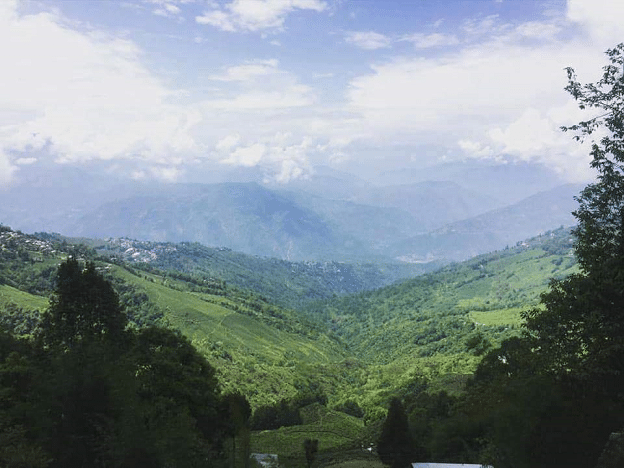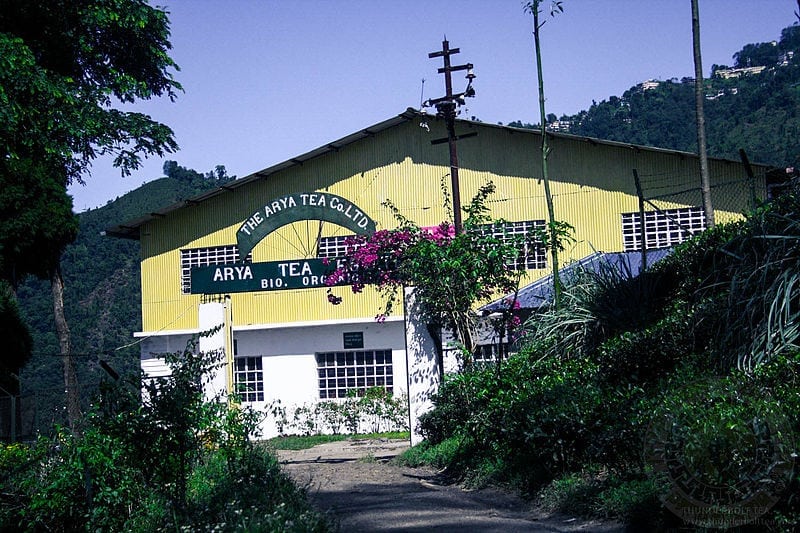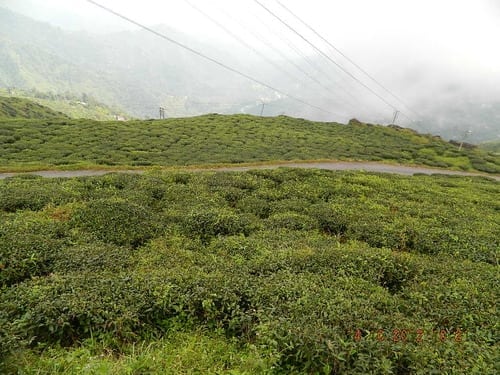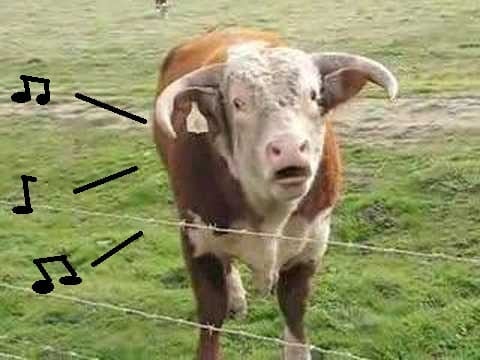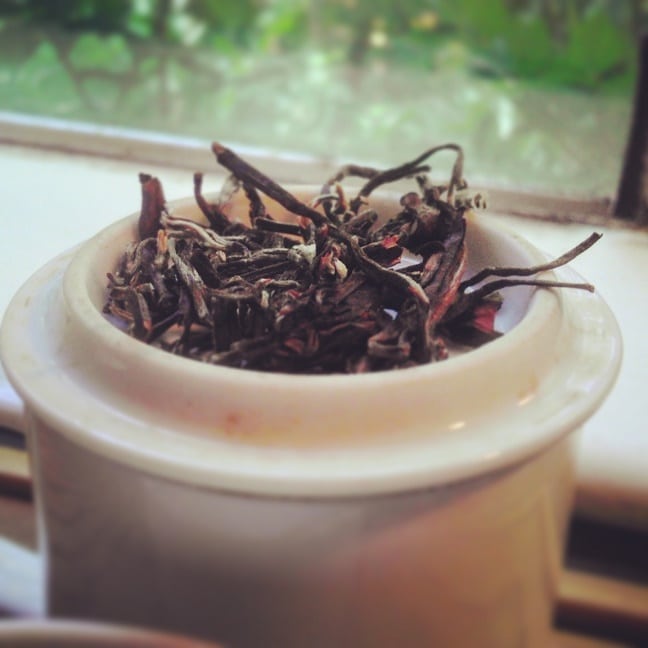This might come as a big shock to a lot of you, but I don’t do a lot of dating.
For the record, it’s mostly my fault. I don’t put much effort into looking, and I’m in no real hurry to start. That and I’m perpetually broke, I don’t take wonderful care of myself, nor do I cultivate a personality oozing of confidence. And – like my tea palate – I’m insanely picky. That said, a drought is still a drought.
If one were reaching, they could even compare it to the recent scourge of waterlessness that struck Darjeeling earlier this year. According to this article posted by Happy Earth Tea, areas of Darjeeling saw their usual yields cut in half by the absence of rainfall. Darjeeling East fared better than most, but a lot of tea estates in the region saw their production cut significantly by the chronically dry weather. The result? Less Darjeeling to go around at a far higher price.
I even saw many a Darjeeling estate director express “water from their eyes” at the lack of “water from the skies”.
Poetic, really. Darjeeling wasn’t alone. Assam saw a similar lack of precipitation, as did my beloved Doke Estate in Bihar. Plans for certain teas were altogether discarded from many due to the lack of leaf abundance.
As a result, I wasn’t expecting to see any of this year’s Darjeeling yields pass by my cup. After 2013’s underwhelming second flushes, I wasn’t too disappointed. Oh, how wrong I was.
In the span of a week after reading that article, Happy Earth Tea informed me that 2014 First Flush samples were heading toward me. As far as Darjeelings went, first flushes were typically my favorite. However, I was expecting more of the same from this year’s batch – spice, faint muscatel notes and nuts. Again…I was wrong. Twice in row.
I already did TeaCuplets for Happy Earth’s Singbulli and Arya Ruby first flushes, respectively. Not only was I blown away, but I actually had to say that these were the best first flushes I ever had. Even better than my favorite year – 2011.
So, what does this have to do with dating, and why did I deem it necessary to do a blog on two disparate subject matters? I’m getting to that. Chill, dudes/dudettes.
This last week, I was moving on to my third Darjeeling in the new Happy Earth Tea retinue – their 2014 Puttabong.
This was a tea estate I had no strong feelings about. I’d had teas from their I liked, and others that I didn’t care for as much. So far, my palate was “take-it/leave-it”. Although, I always giggled when I heard the name. Kinda reminded me of a certain bit of drug paraphernalia.
(Note: No, I was not going to post a picture of a bong.)
The first time I brewed it up, I wasn’t paying too much attention to technique. I over-boiled some water, prepped two scoops of leaves, dumped them in a strainer, poured water into a travel mug, guesstimated three-ish minutes, then left for work. As I drank it on my drive, something tasted…off. I couldn’t put my finger on it.
Sure, the nuts and spices were there in the taste, but there was also a great deal of astringency. As the water cooled down, that chalk-like feeling on the tongue grew stronger. There was only one conclusion I could come to: I had over-brewed it. Damn, that was a bad omen. A bad first cup of tea meant a bad rest-of-the-day.
As I stepped through the door, though…something magical happened.
Between two departmental managers was a woman I hadn’t seen before. She was tall, slender (in a willowy sort of way) with shoulder-length curly brown hair. She had an ivory complexion, a cute button nose, and medium-to-full lips. It was like she’d stepped off of a Jane Austen novel jacket. The assistant manager had told me they’d recently hired someone who was a British ex-pat, but nothing prepared me for this.
She introduced herself; I returned the favor – albeit clumsily. Then I went off to start my tasks. All the while humming songs from Disney’s Robin Hood for some reason. Okay, I knew the reason. Her original home just happened to be a place made popular by Robin Hood lore. That’s all I’m going to say on the subject.
A few hours later, as I was in the middle of cleaning a toilet (yes, I do that)…she approached me.
“I hear you’re a tea drinker,” she said with grace, “I would love to talk to you about that some time.”
“Oh yes, quite into it,” I said, still scrubbing the rim of the bowl. “The first flush Darjeelings are great this year.”
She laughed. It was the greatest sound in the world at that moment.
“Oh wow!” she exclaimed, seemingly impressed. “You’re really into it.”
“Uh-yep.” I said shortly. Then went back to scrubbing. Yep, still got it, I said to myself sarcastically.
Later on, I worked up the nerve to talk to her again, after she waved and smiled at me.
“So…” I had no idea how to ‘open’, so I went with, “What was in your cup this morning?”
“Oh, I had an iced coffee.”
My heart sank.
It was never meant to be.
I went home and revisited that ol’ Puttabong sample. I still possessed the spent leaves from the earlier brew. This time, I took more care in the brewing – three-minute steep. The results were…pure palatial poetry.
I tasted straight grapes. No, not a hint of muscatel…or whatever crap taster notes people associate with Darjeelings. Far bolder than that. This was transcendent of wine grapes – it was sweet, kind, welcoming, warm – kind of like the laughter of…oh…
And then I understood.
Like with the Puttabong, my first impression of British Girl was one of high expectations and fantasies. It wasn’t until a second impression that those unrealistic notions were completely dispelled and surpassed! Sure, my palate is picky, but it also admits when it’s wrong. After all, there was a time when I didn’t even like Darjeelings – sad but true.
The next day, British Girl and I had a few tasks to work on together. We talked, she laughed at my dumb jokes, and her smile always lingered just a bit longer than necessary. I could’ve listened to her laugh all day. When my shift ended, I even stuck around for an extra ten minutes just to hear her talk some more.
Eventually, I did pry myself away from work and return home. A couple of hours in, I brewed up some more Puttabong. It was like a fond, lingering smile in my cup.
Perhaps the drought has ended.
